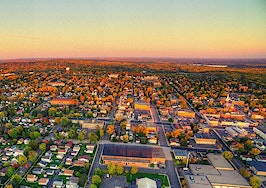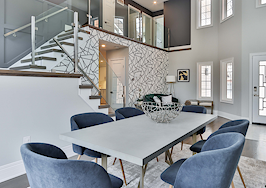Over the past two years, the surge in demand for housing throughout Sun Belt states like Texas, especially in Austin, has made headlines.
New data from the online brokerage Redfin shows the effect the soaring demand has had on the housing market’s valuation, with the value of Austin’s market growing at twice the rate of the country at large over the past year alone.
This comes as property values across the U.S. have skyrocketed, driven by low interest rates and the popularity of remote work untethering white-collar workers from their offices.
The greater demand for housing has resulted in few options for homebuyers, huge gains for homeowners, and higher bills for renters.
“The surge in housing values during the pandemic has widened the gap between homeowners and renters in America,” Redfin Chief Economist Daryl Fairweather said in a statement. “Homeowners have seen their wealth increase significantly over the past year, while renters have missed out on those gains and are now grappling with rent inflation.”
While home values across the U.S. have grown by 18.6 percent over the past year, Austin’s home values doubled that growth, at 39.2 percent, reaching a total valuation of $365.9 billion, the biggest growth among the 100 largest metro areas in the U.S. according to Redfin.

After Austin came Cape Coral, Florida, where home values surged 36.9 percent, and Grand Rapids, Michigan, where they rose 33.1 percent. Grand Rapids was followed by Phoenix, Arizona, and Boise, Idaho, where home values both increased by 32.8 percent.
While Austin consistently found itself in the top 10 of cities most popular with those looking to relocate, it has been knocked down a few pegs more recently as those looking to move are finding themselves priced out, according to Redfin.
Austin’s price growth has mostly been boosted by out-of-towners, who tend to pay more for houses than locals. A July report from Redfin found that relocaters pay an average of $470,000 while locals will spend an average of $447,500.
Big cities weren’t the only areas that saw the significant gains in value, with suburban and rural areas also charting growth — even outpacing most cities, the report found.
The value of homes in rural areas rose about 19.5 percent over a year, while suburban homes rose 19.2 percent.
“The silver lining is that housing values didn’t just climb in large affluent cities,” Fairweather said. “Homeowners in rural America, who don’t normally see substantial home-value increases, also reaped the benefits of a booming housing market.”









